Nikon Speedlight SB-900 is known as a great flash gun loaded with an excellent set of features, but unfortunately, it tends to overheat when pushed hard enough. (Please refer to our Nikon overheating test.) Building on the success of the newer technology employed by Speedlight SB-700, Nikon has released Speedlight SB-910.
Speedlight SB-900 and Speedlight SB-910 have a lot in common. The same power output, wireless capabilities, connection ports, etc. The build quality is same. It seems to be quite obvious that Nikon SB-910 is aimed to address the overheating issues of its predecessor, but it also has a number of other improvements that make the new flash even better.
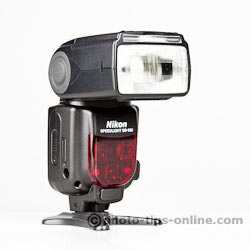 |
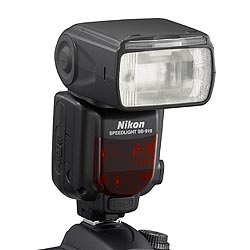 |
The high-end Nikon flashes are capable of delivering quite powerful bursts of light. When a flash fires repeatedly at the maximum power, its head and body get warm. The temperature increase may reach levels at which the flash can get damaged.
Both, SB-900 and SB-910 flashes, shut down the operation when they become too hot. The amount of pops you can get out of them depends on the environment you shoot in. Even the battery type may affect this, since the batteries also get warm when the flash keeps recharging rapidly. The main difference between the two flashes is that SB-910 Speedlight increases the time intervals between the fires to prevent the internal temperature from rising too quickly. (It can still overheat and shut down, but it is quite hard to make it happen.) SB-900 Speedlight allows you shooting at a constant rate, but it locks out considerably quicker if you don't give it a sufficient rest.
The approach Nikon has taken with SB-910 seems to be more practical. When SB-900 or SB-910 turn off due to overheating, it may take several minutes before they can be used again. Even though Speedlight SB-910 sometimes has to increase the time intervals quite significantly, the delays are still much shorter compared to what it takes to bring the flash back from the overheated state.
With Speedlight SB-910, Nikon has made a number of interface improvements. All buttons are better backlit, which makes them easier to use in the dark. The LCD screen has more contrast, which is more noticeable in the low light conditions, as well. The power/wireless switch has a bigger release button that improves the overall ergonomics.
The more important change is the accessibility of the number of the interface elements. The first one that you notice is the new Menu button that replaced Zoom button of SB-900 Speedlight. It makes getting to the custom settings much easier compared to the holding down the OK button for 1 second on the previous model. What is good to see is that the Zoom function did not really suffer from this change. It is not buried in the menus being still available with a single click of the leftmost function button.
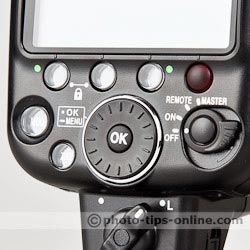 |
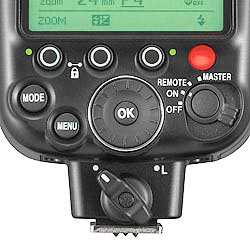 |
Illumination patterns and sound monitor (in the remote mode) are also made easier to change on SB-910 as they are not hidden deep down in the menu system anymore. These functions are probably not something that every photographer would worry about, but it is a nice improvement anyway.
Speedlight SB-900 comes with a filter holder and 4 color correction film gels (2 green and 2 orange). Speedlight SB-910 comes with 1 green and 1 orange color correction filters which are made of hard plastic instead of film. The new filters are quite easier to change, and they should also last longer.
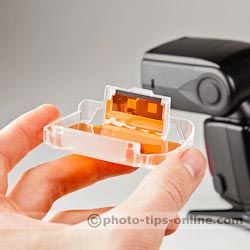 |
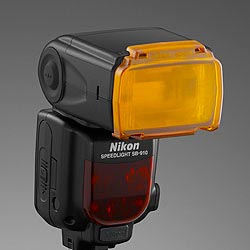 |
The battery chamber door of Nikon Speedlight SB-910 has also received a bit of a rework. It now features a lock that you have to push down to access the batteries. We felt that Speedlight SB-900 is already good enough in this department, but some extra security does not hurt.
The included carrying cases are also different. SB-900 has a more elongated pouch, whereas the case of SB-910 is closer to a square-shaped on. Depending on how you use the case, you might prefer one or the other. We mostly use these cases for storage, so it does not make much difference to us, but if you use such a pouch on you belt, SB-900's case is a better choice.
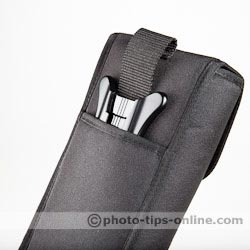 |
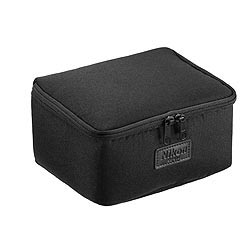 |
With the changes like improved buttons and menus, hard-type color correction filters, and more practical approach to overheating control, Nikon Speedlight SB-910 has the edge over its predecessor. However, Nikon Speedlight SB-900 is still a good option if you don't normally push your flash to the limit in terms of light output. If you need to do so on occasion, you can simply simulate the behavior of SB-910 by taking longer pauses between flashes to avoid locking the flash out due to the temperature increase. Please keep in mind that none of these flashes "solve" the overheating problem, they just deal with it differently. Both flash guns are great, but Nikon Speedlight SB-910 is a logical step forward.